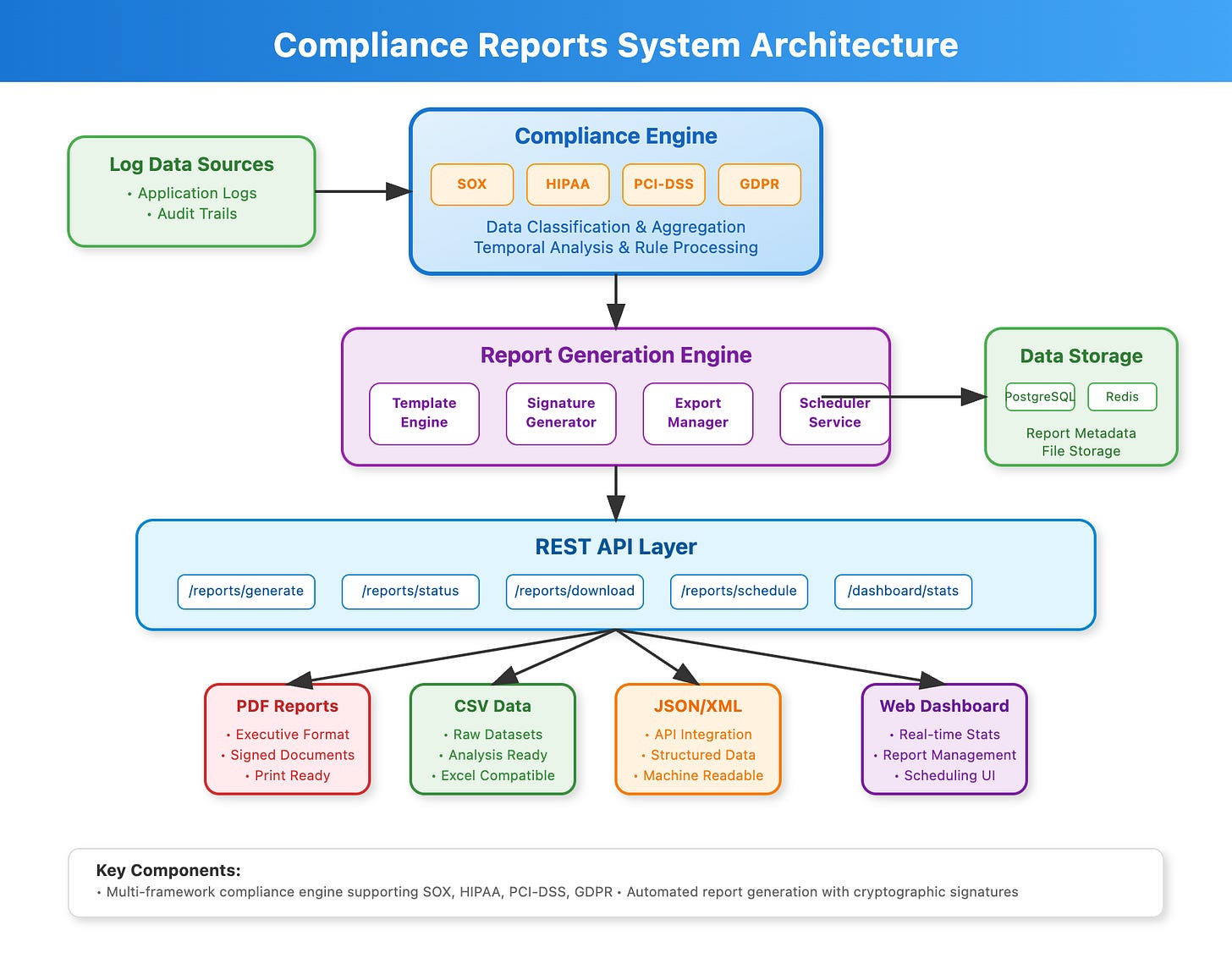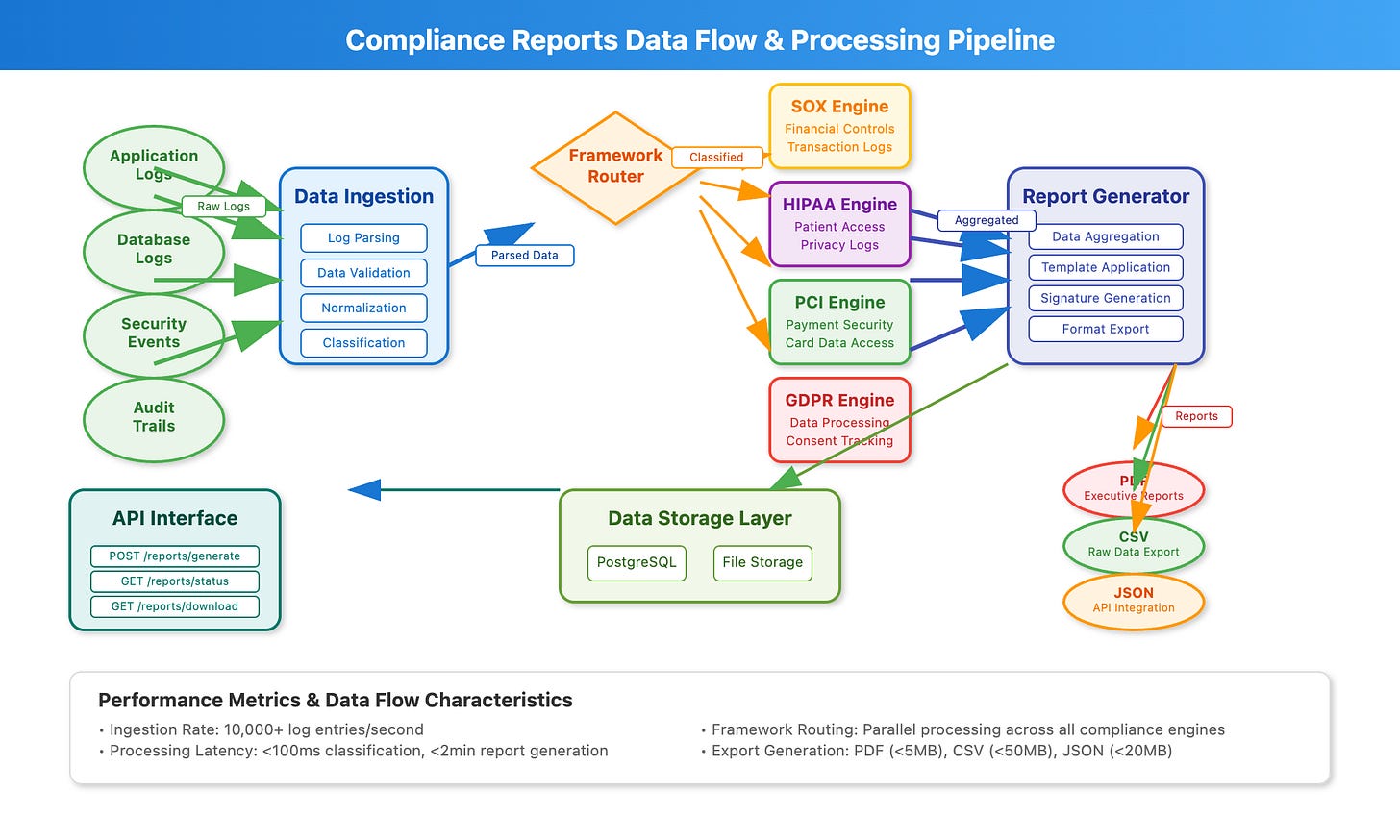Day 70: Building Automated Compliance Reports for Distributed Log Processing
Module 3: Advanced Log Processing Features | Week 10: Security and Compliance
What We're Building Today
High-Level Agenda:
Multi-framework compliance reporting engine (SOX, HIPAA, PCI-DSS, GDPR)
Automated report generation with cryptographic signatures
Professional export capabilities (PDF, CSV, JSON, XML)
Real-time compliance dashboard with Google Cloud UI styling
Scheduled reporting with email distribution
Production-ready error handling and retry mechanisms
Today's Mission: From Log Chaos to Compliance Clarity
Remember when Equifax faced $700 million in fines partly due to inadequate audit trails? Or when Capital One's breach exposed 100 million customers because they couldn't demonstrate proper data handling? These disasters share a common thread: insufficient compliance reporting capabilities.
Today we're building the guardian angel of your distributed log processing system - an automated compliance reporting engine that transforms scattered log data into bulletproof audit documentation.
What We're Building Today
Core Deliverables:
Multi-framework compliance engine supporting SOX, HIPAA, PCI-DSS, and GDPR
Automated report generation with configurable scheduling
Export capabilities in multiple formats (PDF, CSV, JSON, XML)
Audit trail verification with cryptographic signatures
Real-time compliance dashboard with violation alerts
[📊 Component Architecture Diagram]
The Hidden Complexity of Compliance
Most engineers think compliance is just "save everything and hope for the best." Reality check: compliance frameworks require specific data retention periods, access patterns, and reporting formats. HIPAA demands patient data be trackable for 6 years. SOX requires financial transaction logs with immutable timestamps. PCI-DSS needs cardholder data access logs with specific retention schedules.
Your distributed log system already captures this data - but compliance officers need it transformed into standardized reports that auditors understand. That's where our automated reporting engine becomes mission-critical.
Architecture: The Compliance Command Center
[🔄 Data Flow Diagram]
Our compliance reporting system operates as an intelligent layer above your existing log infrastructure:
1. Compliance Rule Engine Interprets various compliance frameworks and maps them to your log data schema. Each framework has unique requirements - SOX focuses on financial controls, HIPAA on healthcare data access, PCI-DSS on payment processing.
2. Data Aggregation Layer Queries distributed log storage to gather relevant entries across time periods. Uses efficient indexing to handle multi-terabyte searches without impacting production performance.
3. Report Generation Engine Transforms raw log aggregations into formatted compliance reports. Templates are framework-specific, ensuring auditors see familiar document structures.
4. Export & Distribution System Handles multiple output formats and automated delivery. Reports can be encrypted, digitally signed, and delivered to compliance teams automatically.






